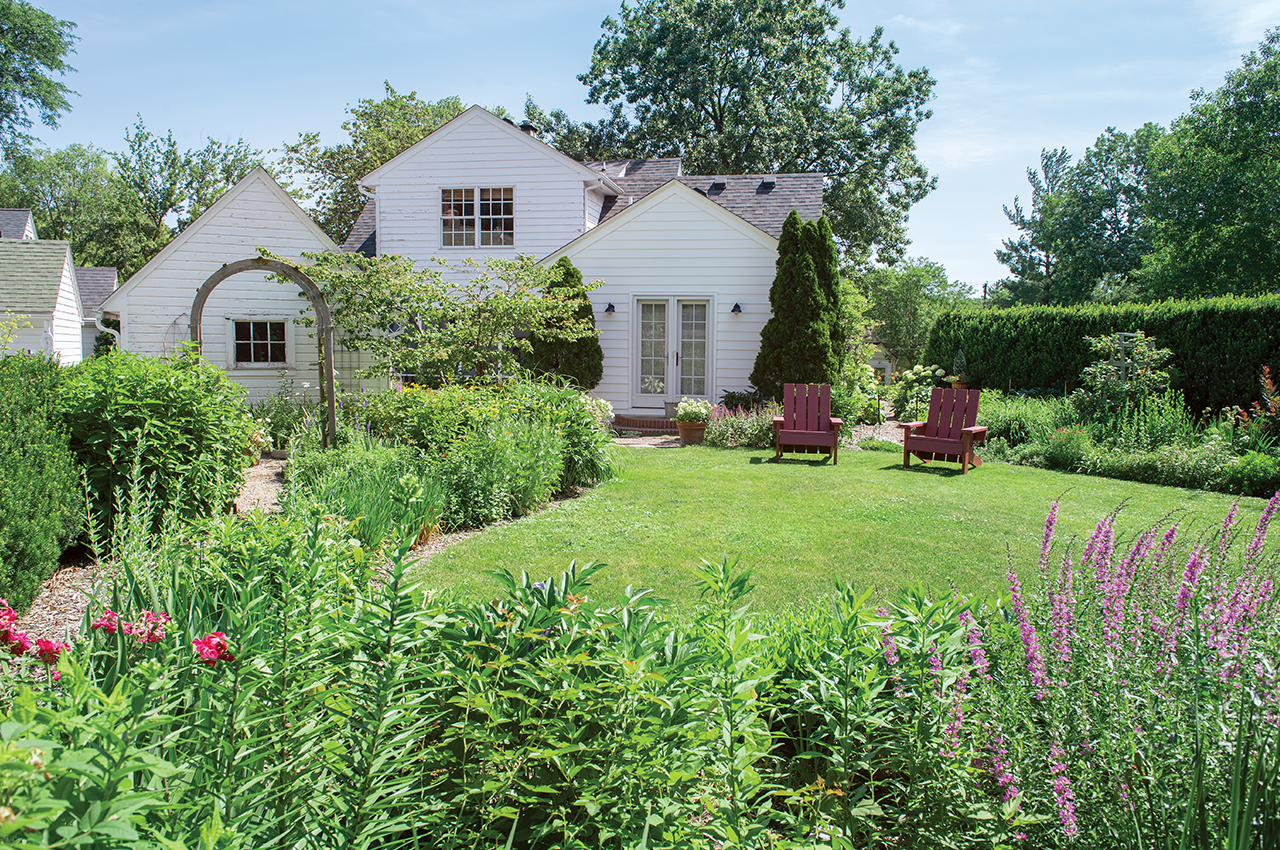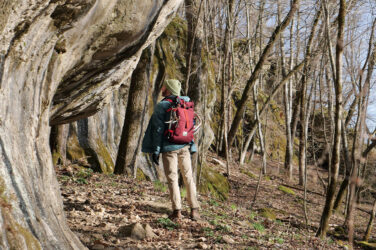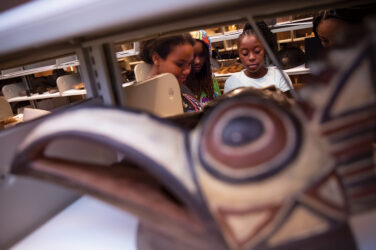Built in 1929, Veronica Lorson Fowler’s white Cape Cod makes a sweet backdrop for a modest-sized garden she calls “a labor of love.” All three of the children she raised here now enjoy gardening, too.
A gardener walks us through what she’s learned in four decades of tinkering in her Ames yard.
Writer: Veronica Lorson Fowler
Photographer: Duane Tinkey
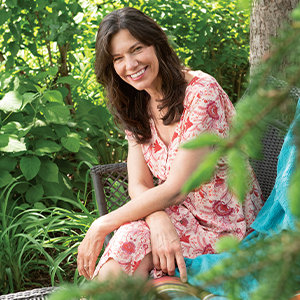
Imagine a laboratory and you might call to mind sterile steel counters and beakers bubbling over Bunsen burners. But my lab isn’t a place for white coats and microscopes. Filled with sky-high sunflowers and featuring a babbling pond, a stone-lined slope loaded with daffodils and as many flowers as I can manage, it’s a place where garden experiments bloom from March through November.
I am a garden writer and my Ames yard serves as a living laboratory, educating and inspiring me on all things horticultural. It’s where I test new plants and teach myself basic and advanced garden techniques, like propagation and pruning. I play around with decorative elements, too, painting pots and arranging flowers. Then I share what I’ve learned in books, magazines, websites and social media posts.
Of course, I’ve taken the master gardener classes and I’ve buried my nose in hundreds of publications geared to growers. But nothing puts my knowledge to the test more than Mother Nature.
Everywhere, there’s evidence of successful experiments and the ghosts of many, many failures. One year, when working on a book about roses, I became overly enthralled with my subject. I wanted to believe the growers when they insisted hybrid tea roses would do just fine in Iowa. I planted several bushes based on their promises and after that first winter, they all died. Then the grandifloras and floribundas went. Years later, only the Canadian Explorer series roses, the rugosas and a couple of other landscape-type varieties remain. Apparently, roses in Iowa don’t abide by the words of commercial growers and garden writers—at least in my lab.
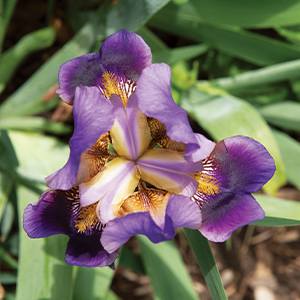
Frustrating disease problems common to German bearded irises inspired a switch to Siberian irises, which are far more disease-resistant.
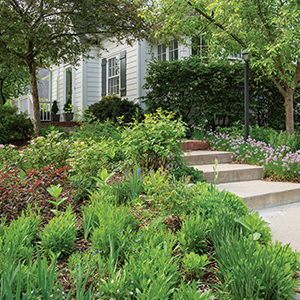
A sloped garden presents challenges. It’s taken years to find just the right plants that will prevent soil erosion and also thrive in a combination of limited moisture resulting from fast drainage and light shade. Shown in bloom are chives, a “Fru Hagmar Hastrup” rugosa rose, and “Ballerina” hardy geranium. The maroon foliage of fringed loosestrife provides contrast.
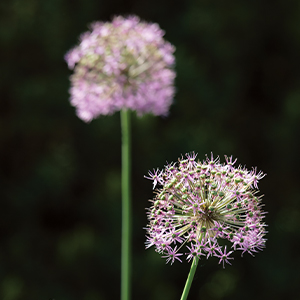
“Globemaster” allium have persisted in the same spot for more than 20 years.
I’ve also tried everything in my power to grow my favorite fruit. Iowa State University extension staff warned me that peaches aren’t reliably hardy this far north, but I figured if I got just the right cultivar in just the right spot, I’d be able to write about my triumph. Instead, spring after spring, I’d dig up the brown remains of a dead peach tree.
Fortunately, when you’re experimenting, even failure breeds success. You learn from each flop. I recall how Lauren Springer, a pioneer in gardening in the harsh climate of eastern Colorado, told me during an interview that she’s killed about half her plantings while figuring out what works well in her region. So when something I plant fails to thrive, I try to remember that I gained important knowledge along the way.
The successes remain. To illustrate a book on water gardening, I dug a small pond for a photo shoot—while six months pregnant. My son is now 25, and that water garden is still providing pleasure.
Photo shoots, in fact, are an excellent driver of experimentation. I’ve contracted with various magazines and garden editors to grow and then write about such things as annual vines, green peas and low-light annuals. These assignments tend to give some of my flower beds a patchwork appearance. But even a floral Frankenstein’s monster is quite charming.
I don’t expect to give up on the experimentation anytime soon. When you’re a gardener, you’re always learning. It’s half the fun. Thomas Jefferson, himself no slouch in the innovation department, put it this way: “Though an old man, I am but a young gardener.”
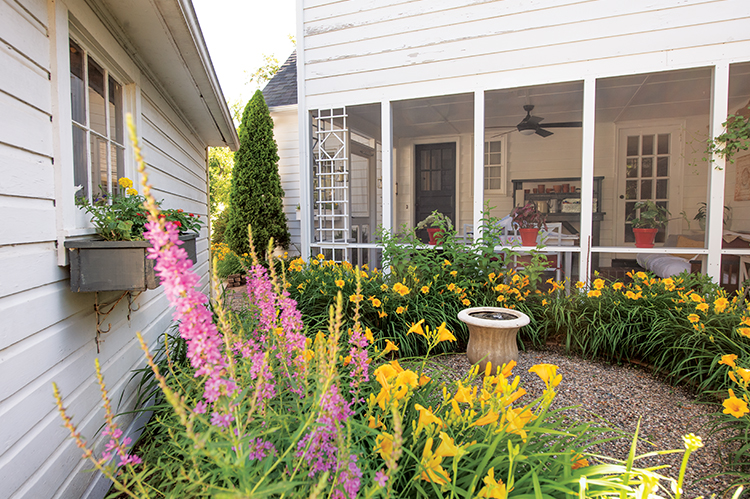
The screened porch has been the site of many photo shoots. Features in and around the garden, like the potting bench, were projects spurred by assignments. The fountain in the middle of the gravel courtyard, ringed with golden “Stella d’oro’” daylilies, was part of a step-by-step project for a magazine.
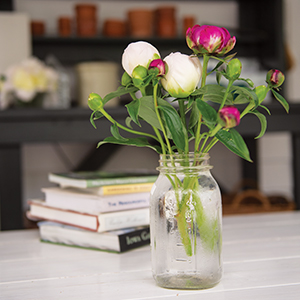
Peonies cut when they were only partially open were part of an experiment for an article.
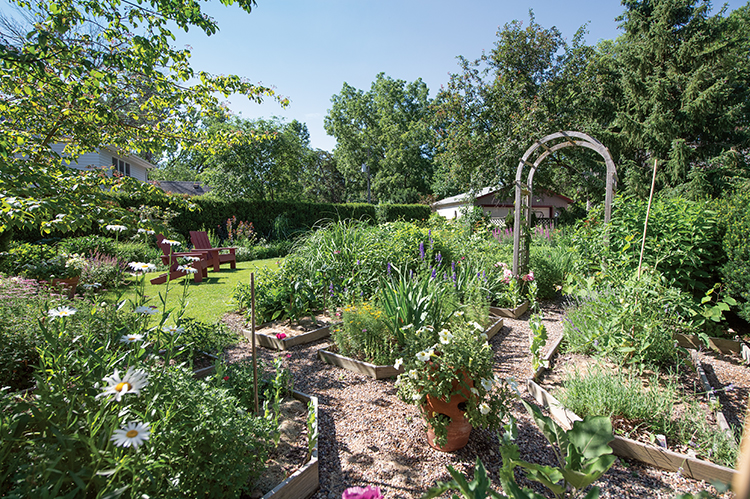
The raised beds began as a vegetable garden but now offer an ideal spot to baby new or fussy plants. In the background, the eight-foot “Hicksii” yew hedge is an early experimental triumph. It grew out of cuttings from a neighbor’s plant.
Lessons from My Living Lab
Compost, compost, compost. There’s no substitute for improving the soil. It’s key to a healthy garden. And compost is the best way to do that. Lots of it. Whether you make your own or buy it, regularly work compost into planting holes and spread it on top of the soil.
Know your exposure. Most gardeners don’t know how much sun they have. Full sun plants need six (better yet, eight) hours a day of unfiltered light from spring through summer. Give sun-loving plants less and they’ll be spindly and struggle with insects and diseases.
Measure the rain. Iowa gardens need one inch of water a week, and the only way to know exactly how much rain you are getting is to use a rain gauge. This helps you know how much water to add. (Tip: Measure your sprinkler, too. Put a shallow dish or pan on top of the soil to see how much water is applied.)
Cut out chemicals. Good general garden practices will do far more than anything in a bottle or a bag. I still use a few synthetic garden chemicals as a last resort, but they are expensive, hurt birds and bees and other wildlife, and might also be bad for you.
Mulch, mulch, mulch. I like newspaper topped with grass clippings in my vegetable garden and shredded hardwood around my flowers and shrubs. It conserves moisture and prevents weeds and some diseases.
Connect with other gardeners. Whether through your local garden club or social media, other gardeners are a wellspring of wisdom—as well as an excellent source of shared plants. They also may be the only ones in your life who will be truly excited for your gardening wins. Like when the internal temperature of your compost heap hits 130 degrees or you finally grow a Himalayan blue poppy from seed.


